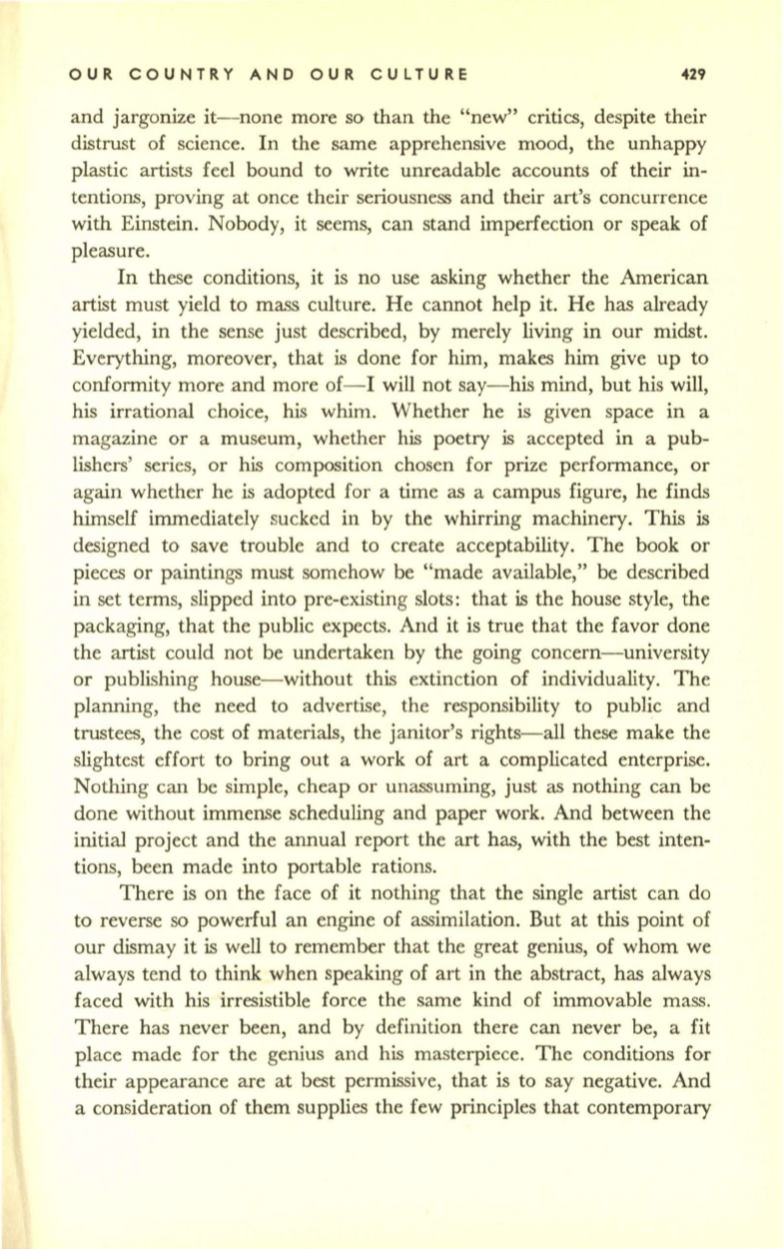
OUR COUNTRY AND OUR CULTURE
429
and jargonize it- none more so than the "new" critics, despite their
distrust of science. In the same apprehensive mood, the unhappy
plastic artists feel bound to write unreadable accounts of their in–
tentions, proving at once their seriousness and their art's concurrence
with Einstein. Nobody, it seems, can stand imperfection or speak of
pleasure.
In these conditions, it is no use asking whether the American
artist must yield to mass culture. He cannot help it. He has already
yielded, in the sense just described, by merely living in our midst.
Everything, moreover, that is done for him, makes him give up to
conformity more and more of- I will not say-his mind, but his will,
his irrational choice, his whim. Whether he is given space in a
magazine or a museum, whether his poetry is accepted in a pub–
lishers' series, or his composition chosen for prize performance, or
again whether he is adopted for a time as a campus figure, he finds
himself immediately sucked in by the whirring machinery. This is
designed to save trouble and to create acceptability. The book or
pieces or paintings must somehow be "made available," be described
in set terms, slipped into pre-existing slots: that is the house style, the
packaging, that the public expects. And it is true that the favor done
the artist could not be undertaken by the going concern-university
or publishing house- without this extinction of individuality. The
planning, the need to advertise, the responsibility to public and
trustees, the cost of materials, the janitor's rights- all these make the
slightest effort to bring out a work of art a complicated enterprise.
Nothing can be simple, cheap or unassuming, just as nothing can be
done without immense scheduling and paper work. And between the
initial project and the annual report the art has, with the best inten–
tions, been made into portable rations.
There is on the face of it nothing that the single artist can do
to reverse so powerful an engine of assimilation. But at this point of
our dismay it is well to remember that the great genius, of whom we
always tend to think when speaking of art in the abstract, has always
faced with his irresistible force the same kind of immovable mass.
There has never been, and by definition there can never be, a fit
place made for the genius and his masterpiece. The conditions for
their appearance are at best permissive, that is to say negative. And
a consideration of them supplies the few principles that contemporary


